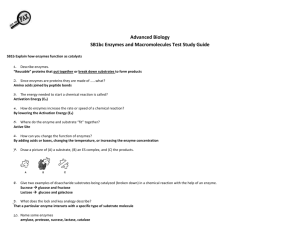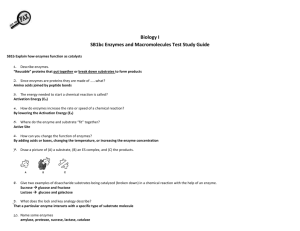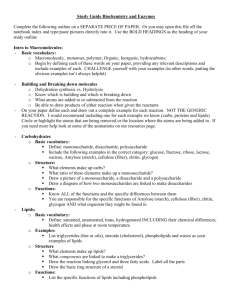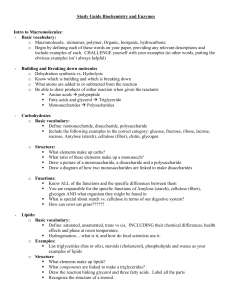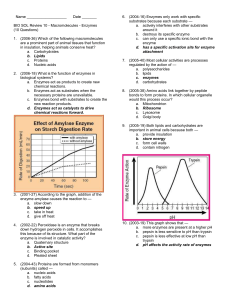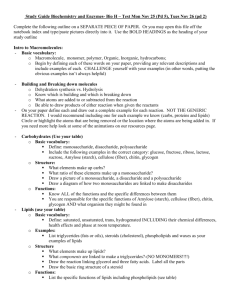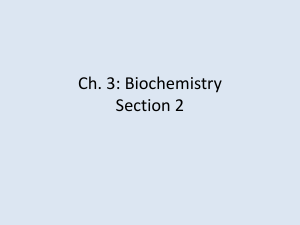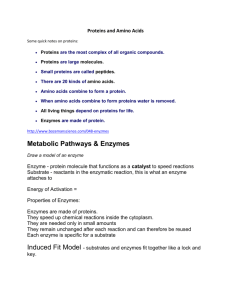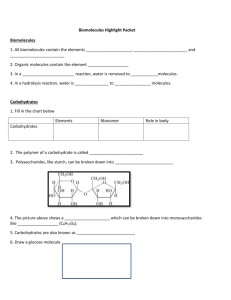SB1bc Test Review Macromolecules and Enzymes Since enzymes
advertisement
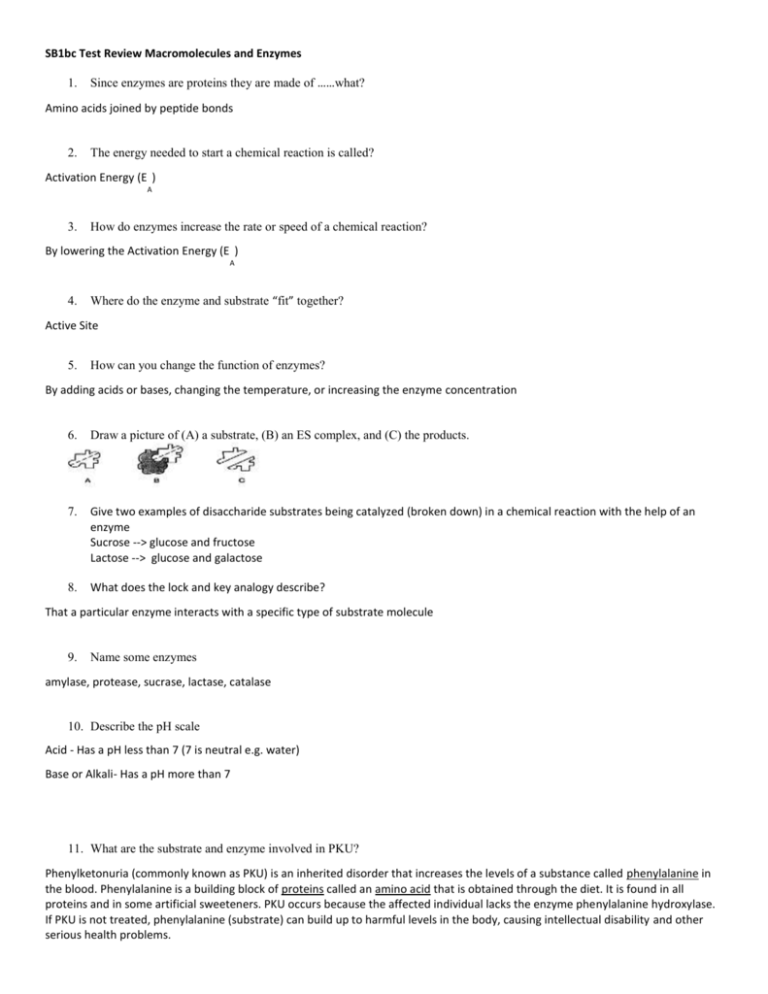
SB1bc Test Review Macromolecules and Enzymes 1. Since enzymes are proteins they are made of ……what? Amino acids joined by peptide bonds 2. The energy needed to start a chemical reaction is called? Activation Energy (E ) A 3. How do enzymes increase the rate or speed of a chemical reaction? By lowering the Activation Energy (E ) A 4. Where do the enzyme and substrate “fit” together? Active Site 5. How can you change the function of enzymes? By adding acids or bases, changing the temperature, or increasing the enzyme concentration 6. Draw a picture of (A) a substrate, (B) an ES complex, and (C) the products. 7. Give two examples of disaccharide substrates being catalyzed (broken down) in a chemical reaction with the help of an enzyme Sucrose --> glucose and fructose Lactose --> glucose and galactose 8. What does the lock and key analogy describe? That a particular enzyme interacts with a specific type of substrate molecule 9. Name some enzymes amylase, protease, sucrase, lactase, catalase 10. Describe the pH scale Acid - Has a pH less than 7 (7 is neutral e.g. water) Base or Alkali- Has a pH more than 7 11. What are the substrate and enzyme involved in PKU? Phenylketonuria (commonly known as PKU) is an inherited disorder that increases the levels of a substance called phenylalanine in the blood. Phenylalanine is a building block of proteins called an amino acid that is obtained through the diet. It is found in all proteins and in some artificial sweeteners. PKU occurs because the affected individual lacks the enzyme phenylalanine hydroxylase. If PKU is not treated, phenylalanine (substrate) can build up to harmful levels in the body, causing intellectual disability and other serious health problems. 12. Describe two primary functions of lipids. Store energy and insulate 13. What are some examples of lipids? Wax, fats, oils, and cholesterol 14. What are the monomers of nucleic acids? Nucleotides 15. What are lipids made of? Fatty acids 16. Which macromolecule stores genetic information? Nucleic acids such as DNA 17. What are some examples of carbohydrates? Polysaccharides and glucose 18. What are the subunits of fats? Fatty acids 19. Lipids may be tested using the brown paper bag test resulting in a translucent spotting effect. What foods would show a positive test? Greasy foods like French fries or potato chips 20. Long chains of amino acids are linked by peptide bonds to form what macromolecule? Protein 21. What is the primary structural component of the human body? Protein 22. Describe enzymes. “Reusable” proteins that put together or break down substrates to form products
